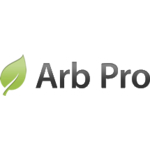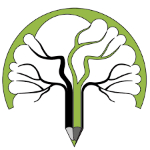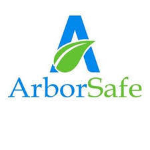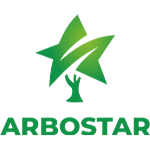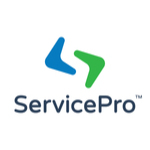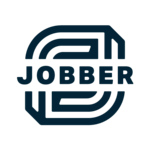TechnologyCounter provides genuine, unbiased real user reviews to help buyers make informed decisions. We may earn a referral fee when you purchase through our links, at no extra cost to you.
List of Best Arborist Software
Showing 1 - 14 of 14 productsArborPlus is a all-in-one solution for managing your arboriculture business. With its user-friendly interface and streamlined features, ArborPlus simplifies day-to-day operations and increases efficiency. Stay organized and save time with our innovat...Read ArborPlus Reviews
Arb Pro is a leading software in the market that streamlines and simplifies traditional arbitration processes. With its advanced tools and user-friendly interface, it allows legal professionals to efficiently manage and resolve disputes. Upgrade to A...Read Arb Pro Reviews
ArborCAD is a software designed specifically for arborists and tree care professionals. With its user-friendly interface features, ArborCAD simplifies the complex process of analyzing, managing, and maintaining trees. Say goodbye to manual measuremen...Read ArborCAD Reviews
Arborgold is a versatile software designed specifically for arborists, landscapers, and other green industry professionals. This powerful tool streamlines daily tasks, increases efficiency, and ultimately improves business operations. With its user-f...Read Arborgold Reviews
ArborSite is a software designed specifically for arborists. This innovative tool simplifies and streamlines tree management, offering unparalleled efficiency and accuracy. With ArborSite, arborists can easily track and assess tree maintenance, savin...Read ArborSite Reviews
ArboStar, the ultimate software for managing your tree care business. Say goodbye to outdated methods and hello to streamlined processes with our innovative platform. With ArboStar, you can efficiently manage your employees, clients, scheduling, and...Read ArboStar Reviews
MapX is a mapping software designed to revolutionize your navigation experience. With advanced features and unmatched accuracy, MapX is a tool for exploring and navigating the world around you. Say goodbye to outdated maps and hello to a seamless map...Read MapX Reviews
Clearion is a software designed to simplify and streamline task management for businesses of all sizes. With its user-friendly interface features, Clearion is a game-changer for organizations seeking to optimize their productivity and efficiency. Fro...Read Clearion Reviews
ServSuite is a dynamic software solution specifically designed to empower businesses in the service industry. With its user-friendly interface features, ServSuite streamlines operations, enhances productivity, and maximizes profits for companies of a...Read ServSuite Reviews
Kickserv is a user-friendly service management platform designed to streamline and organize all aspects of your business, from scheduling and dispatching to invoicing and customer communication. With its intuitive interface and powerful features, Kic...Read Kickserv Reviews
Jobber, the all-in-one solution for small and medium-sized businesses. Developed with the needs of entrepreneurs in mind, Jobber streamlines operations and simplifies daily tasks. With its user-friendly interface and powerful features, Jobber helps b...Read Jobber Reviews
Tree Plotter is a go-to software for efficient tree inventory management and data visualization. With its user-friendly interface features, Tree Plotter streamlines the process of tracking, mapping, and analyzing trees, making it the ideal tool for a...Read Tree Plotter Reviews
SingleOps is a software designed to revolutionize the way businesses manage their operations. With its intuitive platform and user-friendly interface, SingleOps streamlines administrative tasks, increases efficiency, and maximizes profitability. Stay...Read SingleOps Reviews
Bella FSM is a dynamic software solution designed to streamline and optimize your business operations. With its user-friendly interface and powerful features, managing your field service tasks has never been easier. Say goodbye to manual processes an...Read Bella FSM Reviews
- What Is Arborist Software?
- Top Reasons Why Businesses Need Arborist Software?
- What Are the Top Key Features of Arborist Software?
- What Are the Top Benefits of Arborist Software?
- What Are the Steps to Choose the Right Arborist Software?
- What Are the Types of Arborist Software for Different Industries?
- What Are the Technology Trends for Best Arborist Software?
- What Are the Deployment Options for Arborist Software?
What Is Arborist Software?
Arborist software refers to a computer application specifically developed to enhance the knowledge and proficiency of arborists in their field, while also facilitating the streamlined execution of routine responsibilities.
An arborist is an individual who possesses specialized knowledge and expertise in the field of horticulture, specifically focusing on the cultivation, maintenance, and conservation of trees and plants. The best tree service software offers a range of benefits to arborists, encompassing the analysis of tree and plant health, documentation of observations and project plans, scheduling of pruning and trimming appointments, and maintenance of client and supplier records.
This software facilitates arborists' access to pertinent information, including weather patterns, soil composition, and other resources, which are crucial in effectively managing and nurturing trees and plants.
Arborist software is particularly beneficial for financial planning, since it enables arborists to accurately estimate the expenses associated with pruning and trimming services, allowing them to establish appropriate pricing structures.
Furthermore, this particular software possesses the capability to gather supplementary data and offer significant insights, hence facilitating arborists in comprehending their tasks more effectively and enhancing their proficiency.
Top Reasons Why Businesses Need Arborist Software?
1. One potential benefit of automation is the enhancement of operational efficiency by the elimination of laborious and time-consuming operations, such as conducting tree surveys, doing measurements, and carrying out computations.
2. The best tree service software aids in the effective management of inventory, scheduling, and tree maintenance activities.
3. This study provides valuable insights into the overall health and performance of trees, which can aid in the early detection and prevention of potential issues before they escalate to a critical level.
4. Enhances the level of visibility and fosters collaboration among all relevant stakeholders involved in the operational aspects of the organization.
5. The use of a unified platform for data entry and analysis streamlines the comprehensive tree care procedure.
6. The provision of accurate and timely information serves to improve customer service and communication.
7. The software provides functionalities related to budgeting and cost control, including features such as inventory tracking and estimations for plant care.
8. Improves customer service by the provision of enhanced insights into the current condition of their arboreal assets.
9. The provision of detailed data sets facilitates a more accurate assessment of risk, hence mitigating the potential liability associated with trees.
10. The task involves discerning the trees that require pruning or removal and those that can remain.
11. Facilitates convenient documentation and monitoring of alterations within a certain period.
12. The best tree service software offers straightforward instruments for the diagnosis and treatment of tree illnesses.
13. One of the benefits of this service is the enhancement of safety through the provision of comprehensive tree risk assessments.
14. The software facilitates seamless integration with other software applications, thereby offering significant insights into the comprehensive operations of the firm.
15. The utilization of automated systems eliminates the necessity for human data entry and documentation, hence providing users with the advantages of ease and cost savings.
What Are the Top Key Features of Arborist Software?
1. Tree Identification: The inclusion of a tree identification tool within arborist software is crucial, as it enables users to accurately identify and geolocate trees based on their specific kind, species, and several distinguishing features.
2. Tree Measurement: The inclusion of measurement and dimension tools inside arborist software is essential for ensuring the correct assessment of tree size and dimensions. This can be advantageous in ascertaining the extent of trimming that is necessary, for instance.
3. Risk Analysis: The functionality of arborist software should encompass the capability for users to evaluate the potential hazards associated with trees. This encompasses the computation of potential harm resulting from falling branches, evaluation of the probability of flooding, and estimation of the probability of disease occurrence.
4. Tree Scheduling: The inclusion of tree care scheduling features in the best tree service software is essential, as it enables users to effectively strategize and organize maintenance activities such as fertilizer, trimming, and general care.
5. Tree Inventory Management: The functionality of arborist management software should encompass the ability for users to effectively monitor and manage their tree inventory, encompassing crucial information such as age, health, and growth.
6. High-quality Visualization: The provision of topographic maps and 3D representations inside arborist software is essential for facilitating user immersion in the field of arboriculture.
7. Custom Reporting: The functionality of the best arborist software should encompass the capability for users to generate personalized reports, including assessments of tree health and recommendations for trimming.
8. Safety Measures: The inclusion of a diverse range of safety measures in arborist software is vital to ensure the protection of workers, encompassing features such as notifications for adverse weather conditions and potentially dangerous terrain.
What Are the Top Benefits of Arborist Software?
1. Improved tree care efficiency: Arborist software facilitates the optimization of tree care specialists' operations, encompassing tasks such as tree analysis, management, and the conscientious decision-making process about trimming or falling.
2. Automated data capture: The use of arborist management software facilitates precise and thorough data acquisition pertaining to a tree at a singular visit, hence obviating the have for manual input of data.
3. Comprehensive reporting: The arborist program offers comprehensive reports that encompass all pertinent tree data, presented in a range of forms tailored to meet the specific needs of each client.
4. Cost savings: The utilization of the best arborist software optimizes operational processes and mitigates expenses related to the provision of tree care services.
5. Location tracking: The integration of GPS tracking technology with arborist software facilitates the tracking of tree locations, hence enabling efficient site visits and repair requests.
6. Access to historical data: Arborist management software is designed to retain pertinent information related to tree disease, tree health, and service data, hence facilitating convenient retrieval of historical records by users.
7. Tree damage protection: The utilization of arborist management software enables the provision of timely notifications to arborists regarding the potential vulnerability of trees listed under their supervision to potential harm.
8. Risk management: Risk management for arborist software facilitates the identification and mitigation of potential risks arising from diseases, pests, or adverse climatic conditions.
What Are the Steps to Choose the Right Arborist Software?
1) Identify and assess your needs: The initial phase in selecting suitable arborist software involves evaluating the software options that align most effectively with the objectives and requirements of your firm.
Please include information regarding the quantity of users, the specific data analysis requirements, and the types of charts and graphs necessary for project reports or presentations.
2) Research available solutions: Once the assessment of your demands has been conducted, commence the process of investigating and evaluating several best arborist software solutions in order to ascertain the one that most effectively aligns with your specific objectives.
The best tree service software should be evaluated based on its various attributes, including reporting tools, collaboration capabilities, mobile compatibility, and other user-friendly features.
3) Compare pricing and features: Once the list of potential arboriculture software has been narrowed down, it is essential to conduct a comparative analysis of their pricing and features in order to ascertain the most suitable option for the firm.
One should take into account not only the cost of the software itself, but also the expenses associated with customization, training, and support.
4) Schedule a demo or trial period: Prior to reaching a conclusive conclusion, it is advisable to arrange a demonstration or trial period with the software solution under consideration.
In this manner, one can ascertain the compatibility of the selected software with their requirements, as well as its suitability for utilization by their team and their level of familiarity with it.
5) Test the software: Following the completion of the demonstration or trial period, it is imperative to ensure that the software aligns with one's objectives and anticipated outcomes. It is imperative to ensure that one is content with the performance of the program and that it effectively aligns with one's objectives.
6) Make your final decision: Upon doing a comprehensive evaluation of the arboriculture software, it is imperative to ascertain satisfaction with the product's features and performance prior to reaching a conclusive determination.
In order to ascertain the most suitable arborist management software solution for your firm, it is necessary to undertake a comparative analysis of the features, pricing, and customer support offered by various options available in the market.
What Are the Types of Arborist Software for Different Industries?
Arborists have a range of software applications to choose from, depending on the particular needs of their industry.
These include:
1. Forestry Software: This particular software facilitates the management, tracking, and analysis of data pertaining to forestry by arborists.
The utilization of this technology enables the identification, quantification, and monitoring of trees, while also facilitating the management of tree inventories, tracking tree health, generating reports, and conducting site inspections.
2. Arboriculture Software: The arborist management software has been purposefully developed to assist professionals in the field of arboriculture in conducting analyses of tree vitality and health, as well as in identifying illnesses, monitoring insect activity, and implementing appropriate solutions for the maintenance of trees and shrubs.
Additionally, the arboriculture software possesses functionalities that facilitate the monitoring of tree maintenance operations and acts as a valuable data resource for conducting tree care research and making informed decisions.
3. Urban Forestry Software: This particular classification of software has been specifically developed for the purpose of tracking and managing tree inventories in urban areas.
The platform enables users to effectively oversee and assess urban forest ecosystems, as well as systematically monitor and analyze crucial data pertaining to the urban forest's impact on air quality, urban cooling, stormwater runoff, and other related factors.
4. Plant Healthcare Software: The aforementioned software possesses significant capabilities in the realm of plant health maintenance and safeguarding against the detrimental effects of pests and diseases.
This particular program operates as a comprehensive system for the management of plant acquisition, sales, and maintenance. It aids arborists in the monitoring and administration of a diverse range of plants encompassed within their portfolio.
5. Tree Risk Analysis Software: This particular software facilitates the identification of potential tree dangers by arborists, so ensuring the safety and well-being of trees. The system allows users to retrieve predicted data pertaining to the stability of trees, protocols for mitigating risks, and ways for rehabilitation in order to formulate a strategic course of action.
What Are the Technology Trends for Best Arborist Software?
The top technology trends for best arborist software include the following:
1. Cloud-Based Technologies: Cloud-based solutions offer numerous advantages for arborists, including enhanced accessibility to data and improved resource utilization, thereby facilitating their work.
Cloud-based technologies have the potential to enhance efficiency in the operation of arboretums by facilitating streamlined processes for inventory tracking, inventory management, and integration of tree data.
2. Augmented Reality (AR): The utilization of augmented reality (AR) technology is anticipated to augment the overall experience of arborists, enabling them to access comprehensive visual information pertaining to the trees they engage with.
Augmented reality (AR) technology has the potential to facilitate the identification of various tree species, detect indicators of tree health, and offer recommendations for tree maintenance.
3. Artificial Intelligence (AI): Artificial intelligence (AI) has the potential to be employed in the identification of patterns in tree activity, hence enhancing the precision of long-term tree health assessments.
Artificial intelligence (AI) can be employed for the purpose of monitoring the growth of trees, with the aim of mitigating the risk of pest infestations or disease outbreaks.
4. Internet of Things (IoT): The utilization of Internet of Things (IoT) technology enables the remote monitoring of tree health, the management of pest and disease outbreaks, and the analysis of tree data.
The Internet of Things (IoT) can also be used for the purpose of detecting olfactory or auditory indications of a tree being disturbed, so facilitating prompt responses to possible issues.
5. Mobile Applications: Due to the rising prevalence of mobile usage, arborists are progressively resorting to mobile applications as a means of effectively managing their tree care operations.
Mobile applications have the potential to facilitate rapid and convenient access to tree health data, enable remote access to arboretums, and offer current information on appropriate tree care practices.
What Are the Deployment Options for Arborist Software?
Deployment options for Arborist Software vary depending on the particular product, but some of the most common options include:
1. On-Premise Deployment - An on-premise deployment enables an organization to install the program within their own network or server infrastructure, thereby granting them full control over the installation process.
2. Cloud-Based Deployment - Cloud-based deployments are experiencing a growing prevalence, enabling the hosting of software on a cloud provider's infrastructure.
3. Hybrid Deployment - Hybrid deployments involve the integration of on-premise and cloud-based deployments, leveraging the strengths of each deployment model to effectively meet the specific needs of an organization.
4. Multi-Region Deployment - Companies that have offices in several locations can utilize multi-region deployments. This deployment strategy facilitates the accessibility of the software from several locations while minimizing latency.

